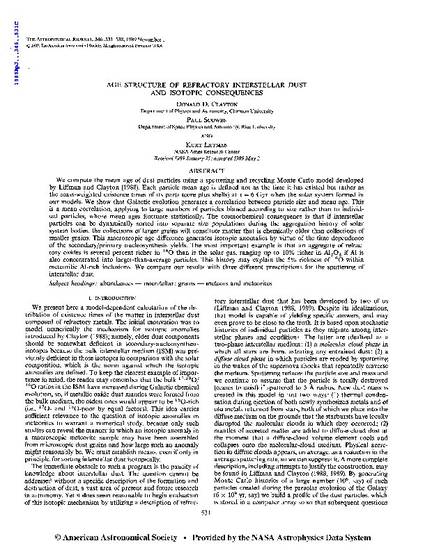
A sputtering and recycling Monte Carlo model, developed by Liffman and Clayton (1988) is used to calculate the distribution of existence times of the matter in interstellar dust composed of refractory metals. The mean age of each dust particle is defined not as the time it has existed but rather as the mass-weighted existence times of its parts at t = 6 Gyr of the modeled solar system formation. It is shown that Galactic evolution generates a mean correlation, applying to large numbers of particles binned according to size rather than according to individual particles, whose mean ages fluctuate statistically. The cosmochemical consequence is that if interstellar particles can be dynamically sorted into separate size populations during the aggregation history of solar system bodies, the collections of larger grains will constitute matter that is chemically older than collections of smaller grains. The macroscopic age difference generates isotopic anomalies by virtue of the time dependence of the secondary/primary nucleosynthesis yields. Results are compared with three different prescriptions for the sputtering of interstellar dust.
